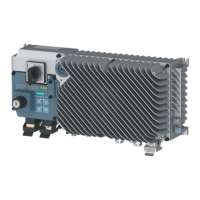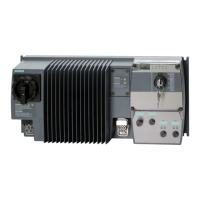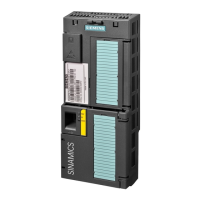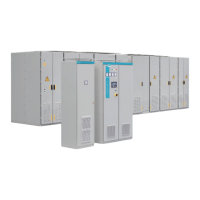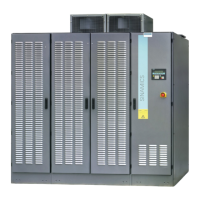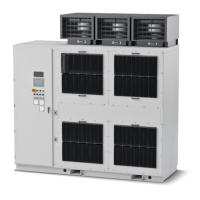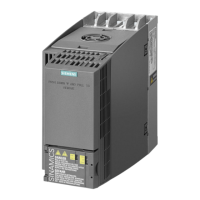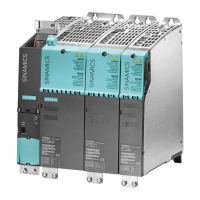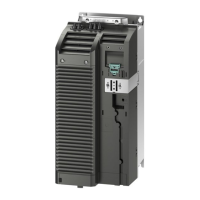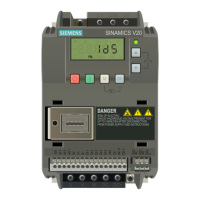Commissioning 04/2005
SINAMICS G110 Operating Instructions
36 6SL3298-0AA11-0BP0
Controlling the speed of the motor is accomplished on the Analog variant by
connecting a potentiometer (≥ 4.7 kΩ) to the analog input (external switches and
potentiometers are not supplied with the inverter) or via the RS485 connections on
the USS variant as shown in the Figure 3-3 above.
Table 3-2 Factory settings for operation using the standard inverter (USS Variant)
Description Terminals Parameter Default Default Operation
USS Address 8/9 P2011 = 0 USS Address = 0
USS Baud Rate 8/9 P2010 = 6 USS Baud Rate = 9600 bps
USS PZD Length 8/9 P2012 = 2 Two 16 bit words are in the
PZD part of the USS
telegram.
(PZD = process data)
Frequency Setpoint 8/9 P1000 = 5 Frequency demand via USS
protocol (HSW)
Command Source 8/9 P0700 = 5 Via USS protocol (STW)
Controlling the speed of the motor on the USS variant is accomplished by
connecting the RS485 connections as shown in Figure 3-3 on page 35.
(USS master or software tool are not supplied with the inverter).
When controlling a USS variant inverter the process data is continually exchanged
between the master and the slaves.
The PZD part of the USS telegram is used for the main setpoint and for controlling
the inverter.
Depending on the direction of communications (PZD from USS Interface or PZD to
USS Interface) PZD transmits either a control word (STW) and setpoint (HSW) or a
status word (ZSW) and an actual value (HIW).
P2012 = 2 as per defaults
PZD 1 PZD 2
STW (Control Word) HSW (Main setpoint)
ZSW (Status Word) HIW (Main actual value)
Warnings and faults states on the inverter
The LED indicates the operating status of the inverter. The LED also indicate
various warnings or fault states. In section 6.1 on page 65, the inverter states
indicated by the LED are explained.
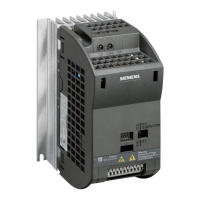
